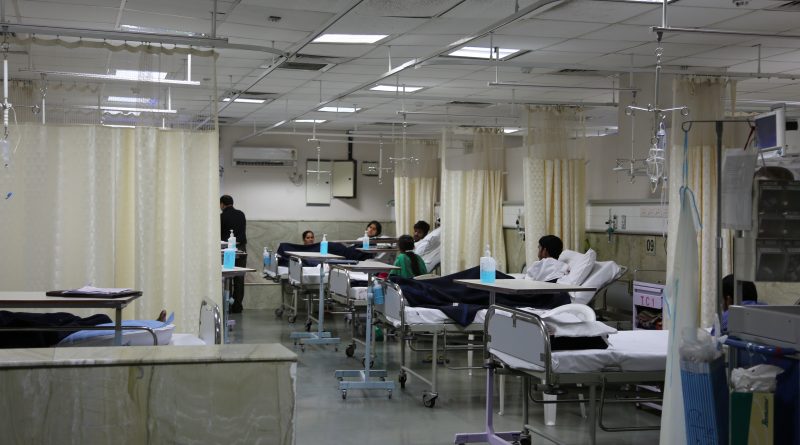Taking Healthcare to the Masses
As the government endeavours to pioneer a distinctive model of affordable healthcare, what we need is the implementation of policies and regulation at the ground level, along with equal contribution of public and private sector hospitals.
By Amresh K Tiwary
Today, affordable healthcare is a big concern. Despite all the efforts being made by the Union government to decrease financial burden of healthcare on people, a lot needs to be done at the ground level to achieve the goal of Health for All.
The government claims that crores of people are benefiting from Pradhan Mantri Bhartiya Janaushadhi Pariyojna (PMBJP), an initiative of the government to provide medicines at affordable prices. The government is working to provide more beds, hospitals and doctors and has taken one step after the other so that the cost incurred by the poor on treatment comes down, but it also needs to rope in big private sector hospitals in its initiative.
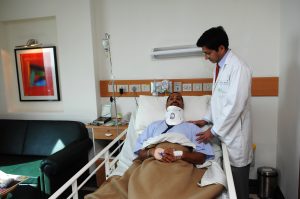
Private healthcare is responsible for the majority of healthcare in India, and most healthcare expenses are paid out of pocket by patients and their families, rather than through insurance. In India, public hospitals (called government hospitals) provide healthcare free at the point of use for any Indian citizen. These are usually individual state funded. However, hospitals funded by the central (federal) government also exist.
The job-based health plan costs 9.56% or less of the employee’s household income. While a job-based plan is affordable and meets the minimum value standard, you are not eligible for employer’s contribution
if you buy a marketplace insurance plan instead.
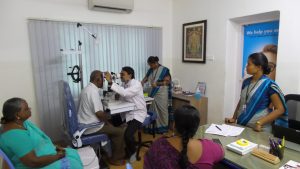
Healthcare Challenges
India offers a number of health challenges that students from developed countries may be unused to, so it is important to know how the healthcare system in India operates. Healthcare in India is a vast system and can be much like the rest of the country: full of complexity and paradoxes.
Most common health issues in India include lack of physical activity and nutrition, overweight and obesity, tobacco, substance abuse, HIV/AIDS, mental health, injury and violence, environmental quality, immunisation and access to healthcare.
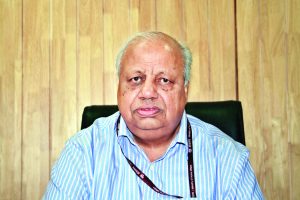
Says Professor of Excellence Dr A K Aggarwal, Medical Director, Innovation Apollo Hospital, New Delhi and Ex Dean Maulana Azad Medical College, New Delhi, “Lack of adequate coverage by the healthcare system in India means that many Indians turn to private healthcare providers, although this is an option generally inaccessible to the poor. To help pay for healthcare costs, insurance is available, often provided by employers, but most Indians lack health insurance, and out-of-pocket costs make up a large portion of the spending on medical treatment in the country.”
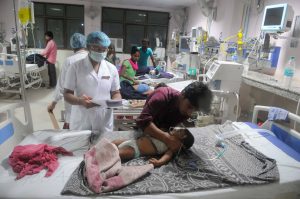
Private hospitals in India offer world class healthcare at a fraction of the price of hospitals in developed countries. This aspect of healthcare in India makes it a popular destination for medical tourists. India also is a top destination for medical tourists seeking alternative treatments, such as Ayurvedic medicine. India is also a popular destination for students of alternative medicine.
Being overweight or obese increases your chances of dying from hypertension, type 2 diabetes, coronary heart disease, stroke, gallbladder disease, osteoarthritis, sleep apnea, respiratory problems, dyslipidemia and endometrial, breast, prostate, and colon cancers.
Tobacco is the single greatest preventable cause of illness and premature death which is now called “Tobacco dependence disease.” According to the Centre for Disease Control and Prevention (CDC), smokers who try to quit are more successful when they have the support of their physician.
Even though pollution affects all of us, government studies have indicated that low-income, racial and ethnic minorities are more likely to live in areas where they face environmental risks. Compared to the general population, a higher proportion of elderly are living just over the poverty threshold.
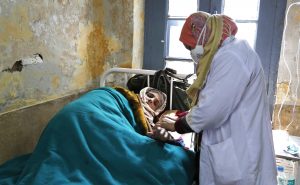
Government Initiatives
To provide good medical facilities to the poor and those residing in rural areas, more than 90 medical colleges have been opened and 15,000 MBBS seats increased. Under the government’s ambitious Ayushman Bharat Programme, around 10 crore families and 50 crore people would be given health insurance of Rs 5 lakh. The first phase of this Yojna has been initiated and soon people across the country, will get benefited by it. As people living in small villages or towns find it difficult to go to a hospital or health centre that is far away, the government has decided to open around 1.5 lakh health centres across the country. Apart from medicines, diagnostics facilities will also be available to them.
 Dr H P Singh, Senior Child Specialist, Mother and Child Clinic, Vaishali (Ghaziabad) observes, “Undoubtedly in the last four years, the Government has taken one step after the other so that the cost incurred by the poor for treatment can come down. Under the PMBJP, the Government has ensured that people get medicines at minimal rates.”
Dr H P Singh, Senior Child Specialist, Mother and Child Clinic, Vaishali (Ghaziabad) observes, “Undoubtedly in the last four years, the Government has taken one step after the other so that the cost incurred by the poor for treatment can come down. Under the PMBJP, the Government has ensured that people get medicines at minimal rates.”
More than 3,600 Jan Aushadhi Kendras have been opened in which more than 700 different types of generic medicines are available at the lowest rates. The government has tried to ensure that in these kendras medicines are available at 50-90 per cent less price be it be medicines for cancer, blood pressure or anything else.
The government has reduced stent prices substantially, benefiting the poor and the middle class the most. Although knee-related issues are common, everybody knows its treatment was not common earlier, as those who had the money could ensure its treatment. The cost incurred on a knee transplant was anywhere around Rs 2.5 lakh to Rs 3 lakh earlier, but now it is not the same. The cost incurred on knee transplants has witnessed a decrease of up to 70 per cent. Knee transplants are now being done in Rs 50,000-Rs 80,000.
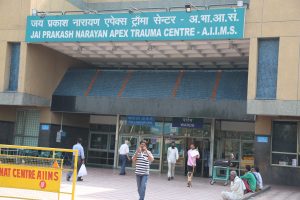
According to an estimate in India, every year 1-1.5 lakh knee surgeries are done and due to decrease in the cost of the operation, there has been a savings of around Rs 1,500 crore for the middle class. Similarly the cost of dialysis too was high and it was available in select cities. Keeping this in mind, the Prime Minister Rashtriya Dialysis Yojna was started. Under it around 22 lakh sessions have already taken place for 2.25 lakh patients. The programme is being undertaken in 80 per cent of the districts of the country. Presently in 400 Jan Swasth Kendras, this is going on while 3200-3300 machines have been made available.
On the whole, the healthcare system in India is quite challenging. There is great discrepancy in the quality and coverage of medical treatment. Healthcare between states and rural and urban areas can be vastly different. Rural areas often suffer from physician shortages, and disparities between states mean that residents of the poorest states, like Bihar, often have less access to adequate healthcare than residents of relatively more affluent states.

